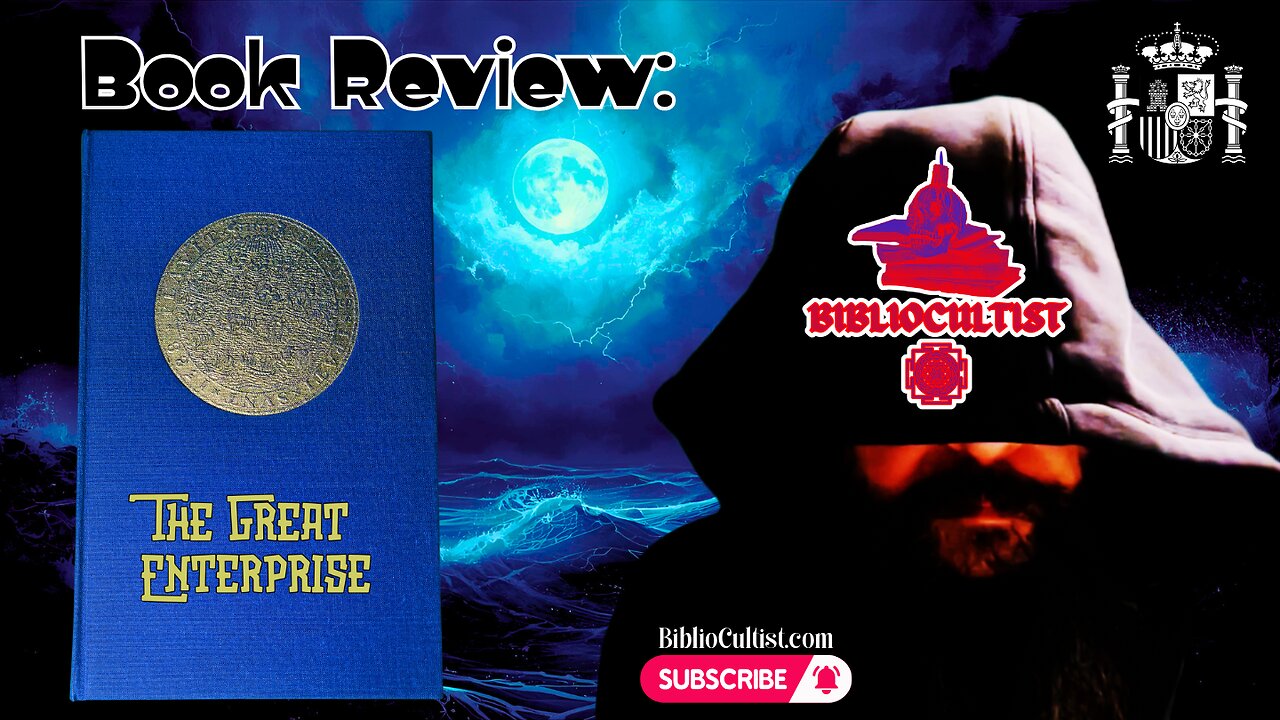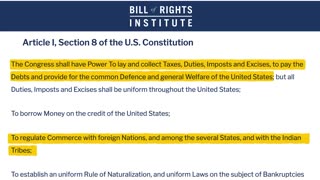Premium Only Content

The Great Enterprise: Voices from the Spanish Armada – A Book Review
**DONATE HERE IF YOU WISH TO HELP FUND THIS PROJECT: http://ko-fi.com/bibliocultist**
In The Great Enterprise, editor Simon Usherwood opens a rare window into one of history’s most legendary naval disasters: the 1588 Spanish Armada. Instead of retelling the story through modern analysis alone, he lets the voices of the past speak for themselves — through letters, dispatches, prayers, and eyewitness accounts from both sides of the Channel. In this review, we dive into how these raw, firsthand narratives reveal not just battles and weather, but fear, faith, pride, and divine delusion. From Drake’s cold confidence to the Duke of Parma’s frustration, from Spanish captains who believed God had abandoned them to English preachers who claimed He sent the storm — this book isn’t just about war at sea. If you love history that feels human, immediate, and unfiltered, this is a must-read.
*all music and content copyright BiblioCultist.com*
#TheGreatEnterprise #SpanishArmada #BookReview #HistoryBooks #TudorHistory #DrakeVsSpain #NavalHistory #HistoricalLetters #SimonUsherwood #CatholicEngland #ProtestantReformation #VoicesOfHistory #MilitaryHistory #EuropeanHistory #Armada1588 #DeepDiveHistory #queenelizabeth #FaithAndWar #biblio #cultist #bibliocultist
**SHOW NOTES**
1. In 1588, during the reign of Queen Elizabeth I, England faced a major naval conflict with Spain when King Philip II sent the Spanish Armada—a large fleet of warships—across the English Channel with the goal of overthrowing Elizabeth and restoring Catholic rule in England. The English navy, though smaller and more lightly armed, used faster, more maneuverable ships and took advantage of tactical errors, storms, and unfavorable winds to disrupt the Spanish formation.
2. Henry VIII, England’s most infamous Tudor monarch, began his reign as a golden prince — pious, cultured, and beloved — but descended into tyranny driven by one obsession: a legitimate male heir. When his first wife, Catherine of Aragon, failed to produce a surviving son after decades of marriage, Henry sought an annulment from the Pope, claiming their union was cursed by God. Denied, he broke from Rome, declared himself Supreme Head of the Church of England, and set in motion a series of marital disasters.
3. The Novus Ordo Missae, introduced in 1969 under Pope Paul VI, marks such a dramatic departure from the traditional Latin Mass that many faithful saw it not as mere reform, but as the effective replacement of a 1,500-year-old sacrificial liturgy with a new rite oriented more toward community gathering than sacred mystery. Celebrated in the vernacular, often with the priest facing the people and with highly abbreviated or simplified rituals, the Novus Ordo emphasizes participation, dialogue, and pastoral accessibility — but at the cost, critics argue, of reverence, transcendence, and the clear sense of the Mass as an objective sacrifice.
4. Sir Francis Drake was Elizabeth I’s most feared seafarer — a privateer, explorer, and naval commander who became a legend in his own time. Commissioned to harass Spanish shipping, he circumnavigated the globe (1577–1580), plundering treasure along the Pacific coast of the Americas and returning with riches that enriched the English crown. To England, he was a hero, knighted by the Queen aboard his ship; to Spain, he was El Draque, a pirate cursed by God.
5. Alexander Farnese, Duke of Parma, was a brilliant Spanish general commanding troops in the Spanish Netherlands (modern-day Belgium). He was a key part of the Armada’s plan: while the fleet under the Duke of Medina Sidonia secured the English Channel, Parma would ferry his veteran army of around 30,000 men across from the Netherlands in flat-bottomed barges to invade England. However, the operation collapsed due to fatal coordination failures.
6. In 1274 and again in 1281, Kublai Khan launched massive invasions of Japan with fleets numbering thousands of ships and hundreds of thousands of soldiers. Both times, as the Mongol armadas approached Kyushu and prepared to land, a sudden typhoon—violent beyond memory—swept through the coast at Kamakura, destroying or scattering nearly the entire fleet. The Japanese called it "kamikaze" — divine wind — believing the storm was sent by the gods, specifically the sun goddess Amaterasu, to protect the sacred islands from foreign conquest.
7. Mary, Queen of Scots, was a Catholic monarch whose tragic life ended in betrayal and blood. Forced to abdicate the Scottish throne as a young woman, she fled to England seeking protection from her Protestant cousin, Queen Elizabeth I — only to be imprisoned for 18 years on suspicion of plotting against her. Despite her royal blood and dignity, Mary became a pawn in religious and political wars. In 1587, after being implicated in the Babington Plot — a plan to assassinate Elizabeth — she was tried, condemned as a traitor, and sentenced to death.
-
 2:10:48
2:10:48
The Robert Scott Bell Show
18 hours agoDr. Andrew Wakefield, Vax Truth Vindication, Del Bigtree, An Inconvenient Study, Jeffrey Tucker, Health Freedom Hoax Exposed - The RSB Show 11-12-25
3871 -
 17:22
17:22
Actual Justice Warrior
1 day agoDemocrats TURN ON Chicago Mayor
2.82K14 -
 14:16
14:16
Nate The Lawyer
1 day ago $0.22 earnedSupreme Court Could Force Trump to Repay All Tariffs | Lawyer Explains
8.5K6 -
 46:25
46:25
Coin Stories with Natalie Brunell
1 day agoErin West: Romance-Crypto Scam Taking Over - "Pig Butchering" Cyber Fraud Explained
7.96K1 -
 1:14:05
1:14:05
DeVory Darkins
17 hours agoDemocrats get BAD EPSTEIN NEWS after major mistake
198K149 -
 2:29:10
2:29:10
Badlands Media
11 hours agoDevolution Power Hour Ep. 406: Cracks in the Empire
242K25 -
 2:55:16
2:55:16
TimcastIRL
9 hours agoNEW Epstein Emails Drop, Dems Claim TRUMP KNEW, Congress Forces Epstein Release Vote | Timcast IRL
266K122 -
 1:19:53
1:19:53
Barry Cunningham
8 hours agoBREAKING NEWS: PRESIDENT TRUMP RE-OPENS THE UNITED STATES GOVERNMENT!
49.3K20 -
 20:47
20:47
The White House
9 hours agoPresident Trump Signs Senate Amendment to H.R. 5371
44.9K35 -
 4:37:57
4:37:57
Drew Hernandez
1 day agoNEW EPSTEIN EMAIL DROP FULLY POLITICIZED
68.5K37